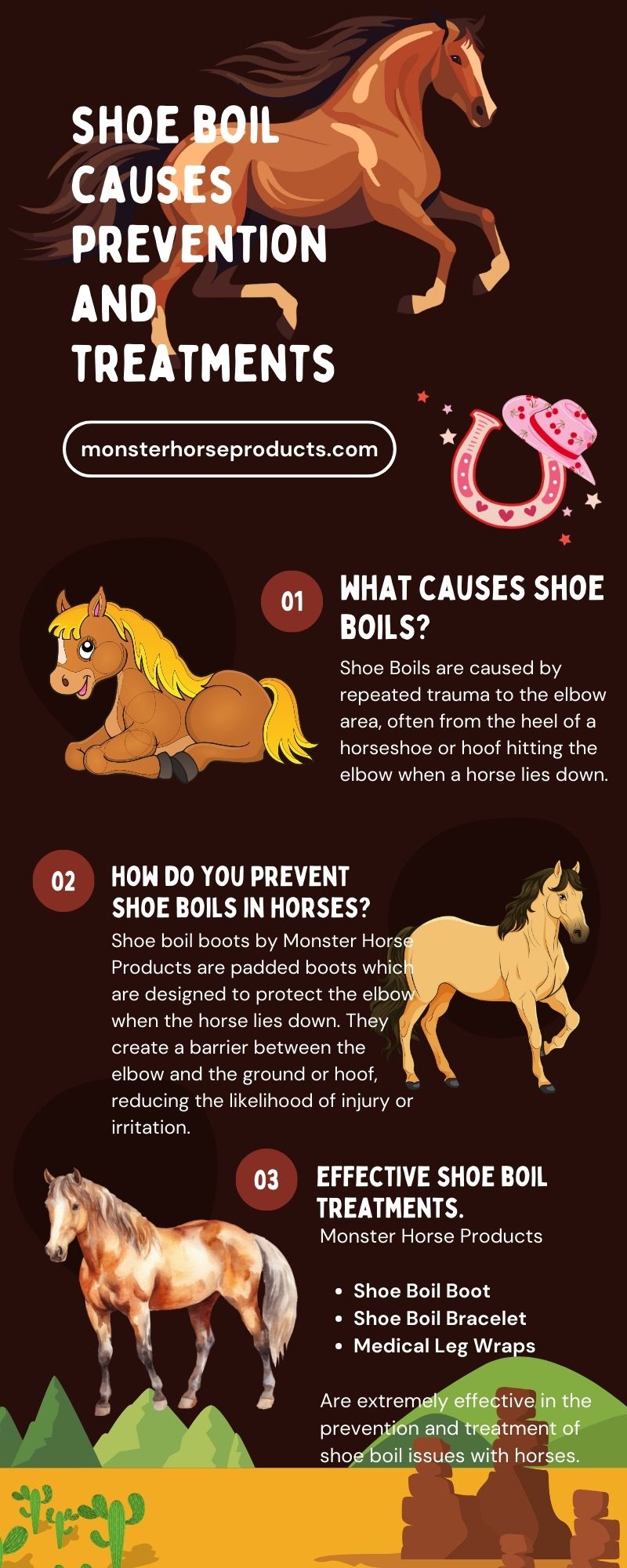To address a "shoe boil" (olecranon bursitis or capped elbow) in horses, focus on prevent further trauma to the elbow by using a shoe boil boot, increasing bedding and potentially shortening or turning the heels of the shoes.
Here's a more detailed explanation:
-
What is a shoe boil?A shoe boil, also known as olecranon bursitis or capped elbow, is a swelling or bursa inflammation at the point of the horse's elbow, often caused by repeated trauma from the hoof or shoe striking the elbow when the horse lies down.
-
Why is it a problem?While often a cosmetic issue, shoe boils can be bothersome if they become large or infected.
-
How to treat it?
- Prevent further trauma:
- Use a shoe boil boot: A soft water friendly, durable boot that helps keep the hooves away from the elbow when the horse lies down.
- Increase bedding: Ensure the stall has ample bedding to cushion the elbow.
- Adjust shoe placement: Consult with your farrier about shortening or turning in the heels of the shoes to reduce contact with the elbow.
- Use a shoe boil boot: A soft water friendly, durable boot that helps keep the hooves away from the elbow when the horse lies down.

- Address existing swellings:
- Cold therapy: Apply cold compresses to reduce swelling and inflammation.
- Anti-inflammatory medication: Your veterinarian may recommend anti-inflammatory medications like Bute or Banamine.
- Topical treatments: Topical DMSO or hydrotherapy (cold water applications) may help reduce swelling.
- Drainage and injections: In some cases, a veterinarian may drain the fluid and inject corticosteroids into the bursa.
- Surgical intervention: In rare cases, surgical removal of the bursa may be necessary.
- Cold therapy: Apply cold compresses to reduce swelling and inflammation.
- Prevent further trauma:
-
Post-treatment management:
- Rest: Limit elbow movement to prevent wound reopening.
- Wound care: If there is an open wound, ensure it is kept clean and treated with a topical antibacterial ointment.
- Antibiotics and anti-inflammatories: Your veterinarian may prescribe antibiotics and anti-inflammatory medication to reduce the risk of infection and inflammation.
- Bandaging: Bandaging can provide support and protection to the area.
- Rehabilitation: Gradually increase exercise and turnout to encourage controlled movement and rehabilitation.
- Rest: Limit elbow movement to prevent wound reopening.
